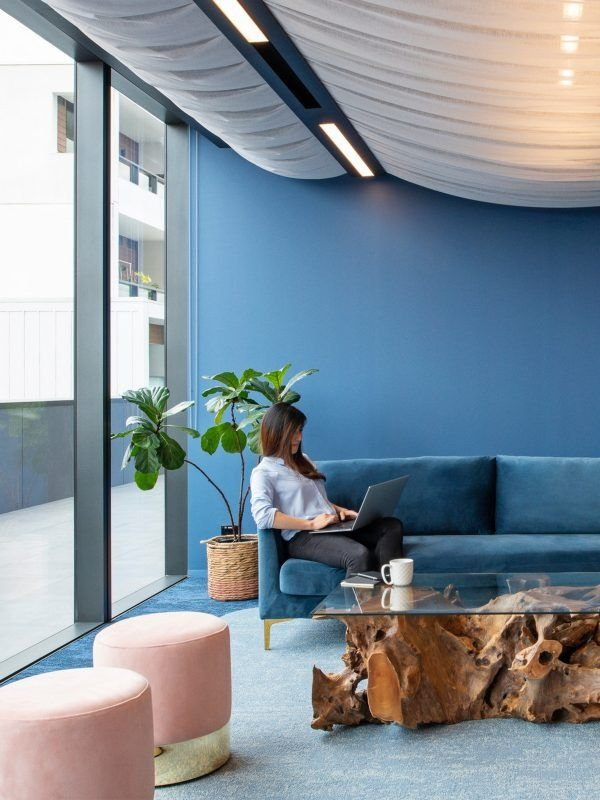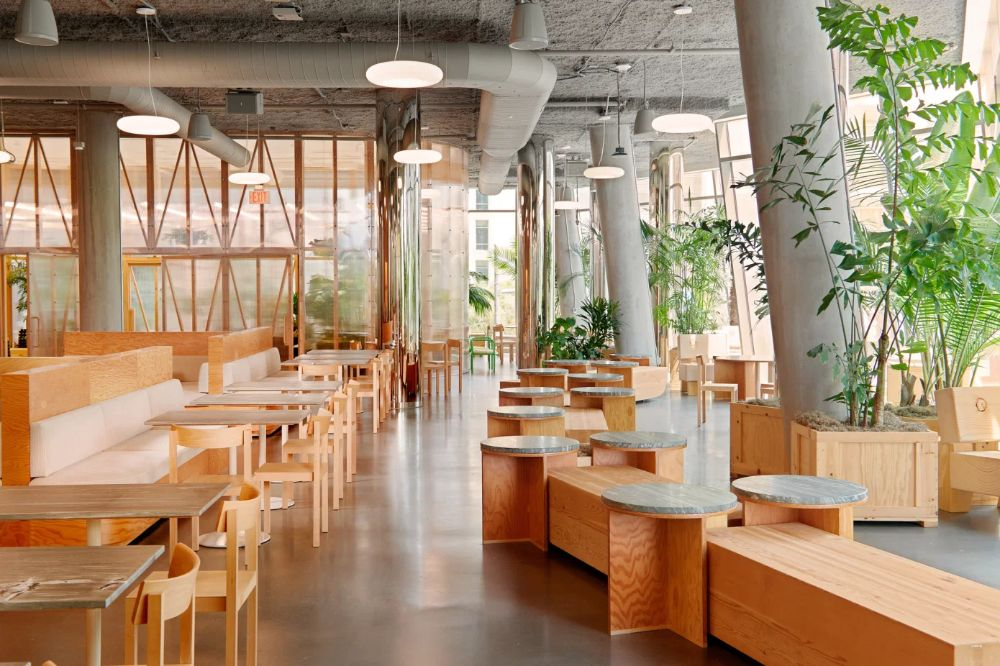In 2025, the idea of hospitality is being radically transformed—not just by technology, but by empathy. As Indian hotels race to offer smarter, greener, and more luxurious spaces, a quieter revolution is taking place: the push for neuroinclusive design.
It’s about time.
For decades, hotels were built to impress. But for neurodivergent individuals—those with autism, ADHD, PTSD, sensory processing differences, or anxiety—grandiose, noisy, chaotic hotel lobbies can be overwhelming, even hostile.
Neuroinclusive hospitality asks a simple question:
👉 What if we designed spaces that are comfortable for every kind of brain?
🌈 What Is Neuroinclusion in Hospitality?
Neuroinclusion is the practice of designing for neurological diversity—not just physical accessibility (ramps, elevators), but emotional and sensory accessibility.
In hotel design, this means:
- Spaces that reduce sensory overload
- Supportive, calming environments
- Easy navigation, simple communication
- Trained staff who understand invisible differences
Globally, brands like Marriott and Hilton are piloting sensory-friendly zones, but in India, the concept is still emerging—and full of potential.

🧠 Why It Matters: The Indian Context
India is home to over 200 million neurodivergent individuals, based on global averages. That’s nearly 1 in 5 Indians who process the world differently.
In 2023–24:
- Indian tourism grew 11.6% YoY (Ministry of Tourism)
- Domestic travelers hit 1.7 billion trips
- Luxury hotel bookings rose 14% in Tier 2–3 cities
Yet, most hotels don’t accommodate:
- Loud sound sensitivity
- Bright, flickering lights
- Crowded or visually chaotic environments
- Communication differences (verbal delays, anxiety)
Neuroinclusive design is not just a “feel good” feature—it’s a business strategy, a differentiator, and a human necessity.

🏨 Reimagining the Hotel Lobby for Sensory Diversity
The lobby is the first impression. For neurodivergent guests, this space often determines whether they feel safe—or anxious.
Here’s how Indian hotel designers can create lobbies that welcome everyone:
1. 🎧 Sensory Zoning: Spaces for Every Brain
Not everyone wants loud music, overhead lighting, or bustling groups.
Introduce clearly zoned areas:
- Low-stimulation corners with dim lighting, soundproof seating, and muted colors
- Active zones for social interaction and activity
- Private check-in booths for people needing discretion or quiet
Use visual cues (floor tiles, textures, lighting gradients) to subtly distinguish zones without signage overload.
2. 🌅 Lighting That Calms, Not Overpowers
Traditional hotel lighting is designed to dazzle. For many neurodiverse people, it causes:
- Migraines
- Eye strain
- Sensory agitation
Design recommendations:
● Use warm, indirect lighting (2700–3000K)
● Avoid flickering fluorescent lights
● Incorporate natural light through skylights or filtered windows
● Install dimmable fixtures that guests can control
● Offer sensory lighting: soft color gradients that respond to mood or time of day
3. 🔊 Controlling Noise and Acoustics
Sound is a major trigger for many neurodivergent individuals.
Tips for lobby acoustics:
● Install acoustic ceiling panels and carpet flooring
● Use noise baffles or natural sound buffers like waterfalls
● Create quiet pods or reading alcoves
● Avoid looping commercial music; instead, offer optional soundscapes via headsets or phone apps
● Allow music-free hours
4. 🌿 Biophilic Elements & Natural Materials
Design grounded in biophilic principles—natural textures, colors, and greenery—has proven calming effects.
Design ideas:
● Use wood, bamboo, terracotta, or stone in lobby elements
● Install green walls or indoor gardens
● Provide plant-filled quiet corners for grounding
● Diffuse natural scents like vetiver, sandalwood, or basil (avoiding synthetic fragrances)
Plants not only relax the nervous system—they filter air and create spatial divisions without crowding.
5. 📱 Digital Wayfinding & Predictive Navigation
A chaotic check-in process can be distressing. Technology can ease it.
Build a predictable guest journey:
● Pre-check-in guides: videos or AR maps of lobby layout, check-in desk, elevator path
● App-based wayfinding with visual cues or color-coded paths
● QR-code signboards for instant translation/audio guidance
● Smart kiosks with neuroinclusive language: slow-scrolling text, icon-based navigation, multi-language audio
● Guest preferences form for sensitivity to lights, smells, sound, or touch—recorded before arrival
6. 🪑 Furniture, Layout, and Sensory Tools
Design that respects personal space is critical.
● Avoid tight corridors and cluttered layouts
● Use rounded corners on tables and counters
● Offer high-back chairs or semi-private booths for regulation
● Provide weighted blankets, fidget cubes, or tactile pillows upon request
● Place visual cue cards (with emojis/icons) at desks to assist non-verbal communication
Hotels can also stock sensory kits with earplugs, eye masks, scent-free wipes, and dimming glasses.
7. 🤝 Staff Training & Empathy Culture
Even the best-designed lobby can fail if the staff isn’t trained.
Staff guidelines:
● Speak calmly and slowly
● Avoid sudden gestures or overwhelming tone
● Respect non-verbal guests and alternate communication
● Offer quiet check-in options without questioning
● Understand that neurodiversity is invisible—don’t assume needs
● Never ask “what’s wrong?”—ask “how can I support you?”
A five-minute empathy primer in daily shift meetings can radically change how guests are treated.

🌏 Real Examples of Inclusive Design in Indian Hospitality
1. Devi Ratn – Jaipur
This boutique hotel integrates neuroarchitecture—design based on neural comfort—with flowing forms, daylight corridors, and ambient sound control.
2. Taj Vivanta – Lucknow
Their lobby uses soft chikankari motifs, filtered sunlight, and biophilic landscaping to evoke calm and regional heritage.
3. The Fern Hotels
Some of their properties offer private check-in rooms, aroma-free suites, and natural-material lobbies for sensory relief.
4. Novotel Visakhapatnam
They implemented Braille menus, neurodiverse staff hiring, and quiet lounge options—extending beyond just disability-friendly access.
📈 Benefits of Neuroinclusive Design for Hotels
| BENEFIT | IMPACT |
|---|---|
| Guest Comfort | Less anxiety, more satisfaction, longer stays |
| Repeat Business | Neurodivergent families and professionals return to safe environments |
| Social Reputation | Seen as empathetic, inclusive, forward-thinking |
| Revenue Growth | Opens up new audience: neurodivergent tourists, families, remote workers |
| Staff Morale | Training leads to empathetic culture and reduced conflict |
| Compliance Ready | Future accessibility certifications may require neuroinclusive design |
🚀 What the Future Looks Like
By 2030, India’s hospitality will need to reflect not just economic growth, but inclusive growth.
Emerging trends:
- Neuroinclusive Star Ratings: Hotels rated for sensory access and diversity
- AI-driven lobby design: Dynamic lighting, scent, and sound zones adjusting in real-time
- Co-living Neuro Pods: Quiet sleep/meditation rooms integrated in lobbies
- Neuro-tourism packages: Tours designed with rest breaks, sensory-sensitive transportation, and calming activities
- Hospitality schools training in neurodiverse guest care
💡 Implementation Checklist for Indian Hoteliers
✅ Design Zones: Low-stimulus areas, social lounges, retreat spaces
✅ Lighting Plan: Dim, warm, indirect lighting with guest control
✅ Acoustic Treatment: Carpets, baffles, quiet pods
✅ Sensory Toolkit: Fidgets, earplugs, visual cue cards, calming kits
✅ Staff Training: Empathy-based language and protocols
✅ Digital Onboarding: App-based sensory preferences and map
✅ Biophilia: Plants, natural materials, scent-free environments
✅ Visual Simplicity: Low-contrast signs, no visual clutter
✅ Predictable Layout: Linear navigation, quiet entrances
✅ Inclusive Events: Quiet hours, sensory-friendly celebrations
🙏 Final Words: Designing for Dignity
Neuroinclusive hospitality is not a trend—it’s a long-overdue design philosophy rooted in dignity, respect, and human-centered care.
When hotel lobbies in India are built for all minds, they don’t just serve the neurodivergent.
They help everyone—tired travelers, overwhelmed parents, anxious employees, elderly guests—feel calm, seen, and supported.
In the end, neuroinclusive design isn’t just about what we build.
It’s about who we build it for—and why.
📞 Need Help Designing a Neuroinclusive Hotel Lobby?
Whether you’re working on a boutique retreat in Rishikesh, a 5-star in Delhi, or a smart hotel in Panipat, I’d love to help.
● Sensory-friendly layout plans
● Staff empathy training modules
● Materials and tech recommendation list
● Local vendor references
📩 Write to me at contact@mishulgupta.com
📱 Or DM me on LinkedIn – Mishul Gupta
